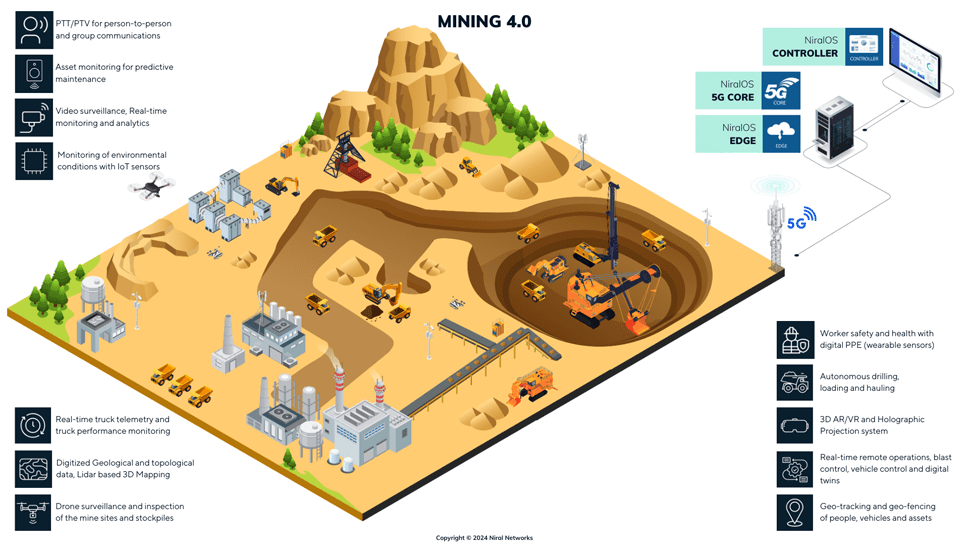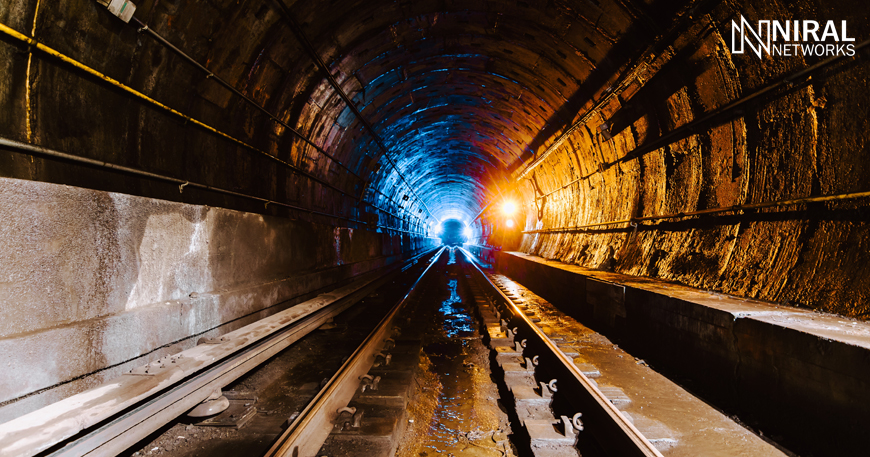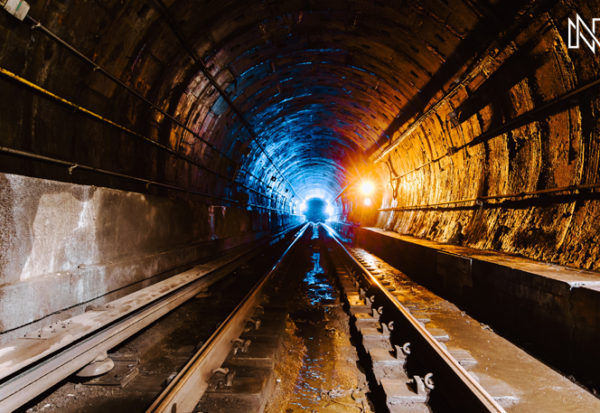Mining, an essential sector of the global economy, plays a vital role in extracting valuable resources from the Earth’s depths. From precious metals like gold and silver to essential minerals like coal and iron ore, mining forms the foundation for various industries and provides the raw materials necessary for manufacturing and construction. It involves the excavation, extraction, and processing of minerals and resources found in diverse geological formations worldwide. Mining has a rich history that stretches back centuries, and it continues to evolve today with advancements in technology and sustainable practices. Let’s embark on a journey to explore the fascinating world of mining and uncover its significance in shaping our modern civilization.
Exploring the Depths: Mining Areas
Mining encompasses a diverse range of activities carried out across different geographical areas. Here are some of the primary types of mining areas:
- Surface Mining: This method involves extracting minerals or resources located near the Earth’s surface. It is commonly used for coal, copper, and iron ore extraction.
- Underground Mining: In contrast to surface mining, underground mining involves extracting minerals or resources from deep beneath the Earth’s surface. It is employed for various minerals like gold, silver, and diamonds.
- Open-Pit Mining: This method involves excavating large open pits or quarries to extract minerals like coal, copper, or precious stones. Open-pit mining is typically conducted when the mineral deposit is close to the surface.
- Placer Mining: Placer mining focuses on extracting valuable minerals, such as gold, from riverbeds and alluvial deposits. It involves using water to separate the minerals from the sediment.
Major Challenges in Mining
The mining industry faces several significant challenges that demand constant attention and innovation. Some of the key challenges include:
- Safety: Mining operations can be hazardous, leading to accidents and incidents. Ensuring the safety of workers is of paramount importance. Despite safety protocols, accidents still occur, resulting in injuries and, in some cases, fatalities. Statistics show that in 2020, the global mining industry witnessed approximately 1,500 fatalities, emphasizing the need for robust safety measures.
- Environmental Impact: Mining operations can have adverse effects on the environment, including deforestation, soil erosion, and water pollution. Efforts to minimize and mitigate these impacts are vital for sustainable mining practices.
- Resource Depletion: As easily accessible deposits diminish; mining companies face the challenge of extracting resources from more remote or complex locations. This often requires advanced technologies and techniques to optimize resource recovery.
Digitalization in Mining – Transforming an Age-Old Industry

The mining industry, known for its traditional and labor-intensive practices, is undergoing a profound transformation through digitalization. As the world becomes increasingly connected and technology advances at a rapid pace, mining companies are embracing digital technologies to optimize operations, improve safety, and enhance productivity. This digital revolution is reshaping the way mining activities are planned, executed, and managed, leading to a more efficient, sustainable, and safer industry.
- Automation and Robotics: One of the key aspects of digitalization in mining is automation and robotics to improve efficiency, reduce human risk, and enhance productivity. Autonomous vehicles, drones, and robotic systems are being deployed to perform various tasks that were previously done manually. For example, autonomous haul trucks are now navigating mining sites, transporting materials, and reducing the reliance on human operators. This not only improves efficiency and reduces costs but also minimizes the risks associated with hazardous working conditions.
- Data analytics and artificial intelligence (AI) are also playing a pivotal role in the digital transformation of mining. By collecting and analyzing vast amounts of data from sensors, equipment, and geological surveys, mining companies can gain valuable insights and make informed decisions in real-time. AI algorithms are used to optimize mine planning, ore processing, and predictive maintenance, resulting in improved operational efficiency and resource utilization.
- The Internet of Things (IoT) has emerged as a game-changer in the mining industry. IoT devices and sensors are deployed throughout mining operations, enabling real-time monitoring of equipment health, environmental conditions, and worker safety. This data-driven approach allows for proactive maintenance, early detection of equipment failures, and the implementation of effective safety protocols. IoT also facilitates remote monitoring and control, enabling mining operations to be managed from centralized command centers.
Digitalization is not limited to the mining operations themselves but also extends to supply chain management. Blockchain technology is being explored to enhance transparency and traceability in the procurement and distribution of minerals. By creating immutable and decentralized records, blockchain can help ensure responsible sourcing, fair trade, and compliance with ethical standards in the mining industry.
Furthermore, digital technologies are driving sustainability in mining. Advanced monitoring systems and analytics enable better environmental impact assessments, water management, and energy efficiency. Digital solutions are also aiding in the reclamation and rehabilitation of mining sites, mitigating the long-term ecological effects of mining activities.
The digitalization of mining is not confined to any particular region. Countries like Australia, Canada, and the United States are at the forefront of implementing digital technologies in their mining operations. In addition, emerging economies like India, Brazil, and South Africa are embracing digitalization to improve productivity and safety while minimizing the environmental footprint.
In conclusion, digitalization is revolutionizing the mining industry, ushering in a new era of efficiency, safety, and sustainability. Automation, data analytics, AI, IoT, and blockchain are transforming the way mining companies operate, ensuring responsible resource extraction and promoting the well-being of workers and the environment. As technology continues to advance, the potential for digitalization in mining is boundless, offering endless opportunities for growth, innovation, and a more sustainable future.
Private 5G in Mining: Empowering Connectivity and Efficiency
As the mining industry embraces digitalization, the potential of Private 5G networks is emerging as a game-changer. Private 5G, a dedicated cellular network deployed exclusively for a specific enterprise or organization, offers robust, secure, and ultra-fast connectivity that can revolutionize mining operations. By leveraging the power of Private 5G, mining companies can unlock new levels of efficiency, safety, and productivity. Private 5G networks hold tremendous potential for transforming mining operations. Here’s how:
- Enhanced Connectivity: Private 5G networks provide robust and reliable connectivity, enabling seamless communication and data transfer between various mining components, including autonomous vehicles, machinery, and workers.
- Increased Efficiency: With high-speed, low-latency connectivity, mining operations can be optimized, leading to increased productivity, streamlined processes, and reduced downtime.
- Improved Safety: Private 5G networks facilitate real-time monitoring of equipment and workers, enabling quick response to potential safety hazards. This helps prevent accidents and protect the well-being of mining personnel.
- Optimal Resource Management: Private 5G networks enable efficient resource management in mining operations. Real-time data collection, analysis, and transmission facilitate precise monitoring of resource utilization, helping to optimize extraction and processing techniques. This ensures maximum resource recovery while minimizing waste and unnecessary energy consumption. Additionally, accurate data on equipment performance and health allows for predictive maintenance, reducing downtime and optimizing operational costs.
- Seamless Integration of Emerging Technologies: Private 5G networks act as a foundation for the integration of other cutting-edge technologies in mining. For example, they can support the connectivity requirements of advanced sensors, drones, and augmented reality (AR)/virtual reality (VR) systems used for geological surveys, inspections, and training purposes. This integration enhances the accuracy of data collection, improves decision-making, and fosters innovation in mining practices.
- Remote Operations and Collaboration: Private 5G networks enable remote operations and collaboration in mining. Mining sites located in remote or challenging terrains can be efficiently monitored and controlled through high-bandwidth, low-latency connections. This opens up possibilities for remote experts to provide guidance, troubleshoot issues, and collaborate with on-site teams, eliminating the need for constant physical presence. This flexibility and remote accessibility enhance operational efficiency and reduce costs associated with travel and logistics.
Mining is a complex industry that plays a crucial role in our society. Despite the challenges it faces, such as safety risks and environmental concerns, the industry is continuously evolving through digitalization efforts. By harnessing technologies like automation, data analytics, and Private 5G networks, mining operations can become more efficient, safer, and sustainable. With ongoing advancements, the future of mining looks promising, paving the way for responsible resource extraction and economic development.
If you found our exploration of mining, digitalization, and the potential of Private 5G intriguing, we encourage you to delve deeper into the subject. To gain more in-depth knowledge, we recommend reading our comprehensive whitepaper on Mining, which provides a detailed analysis of the industry, challenges, and opportunities in the digital era.
Additionally, stay updated with the latest insights and trends in mining, digital transformation, and Private 5G by exploring our regularly updated blogs. These resources offer valuable information, case studies, and expert perspectives that can further enhance your understanding of the topic.
If you’re interested in exploring how Niral Solutions can assist your enterprise in setting up Private 5G environments for your mining operations, we invite you to schedule a demo with our team. During the demo, we can discuss your specific requirements, address any queries you may have, and explore the potential of leveraging Niral Solutions’ expertise in implementing Private 5G networks tailored to your mining infrastructure.
Don’t miss the opportunity to harness the power of digitalization and Private 5G in revolutionizing your mining operations. Contact us today to schedule a demo and embark on a transformative journey towards enhanced connectivity, efficiency, and safety in your mining endeavors.
To schedule a demo and discuss how Niral Solutions can assist in setting up Private 5G environments for your enterprise, we kindly request you to provide your contact details or specify your preferred method of contact. This will allow us to reach out to you promptly and arrange a demo tailored to your specific needs.
Enabling a Reliable and Efficient Communication Infrastructure for the Indian Mining Industry
Download Whitepaper




